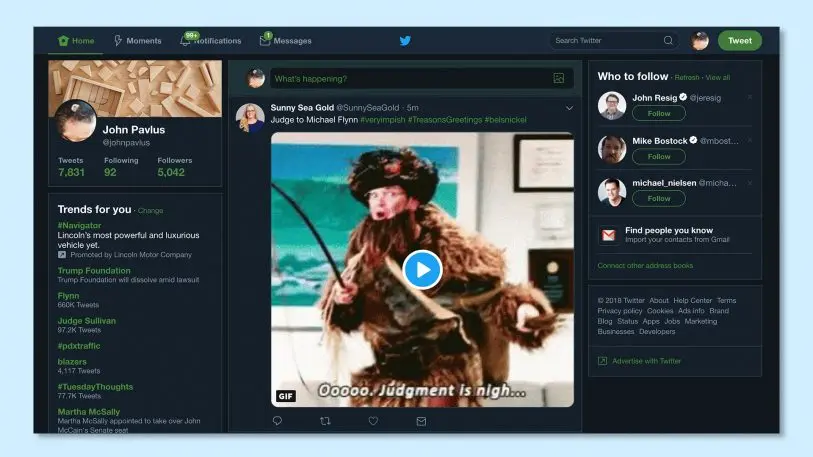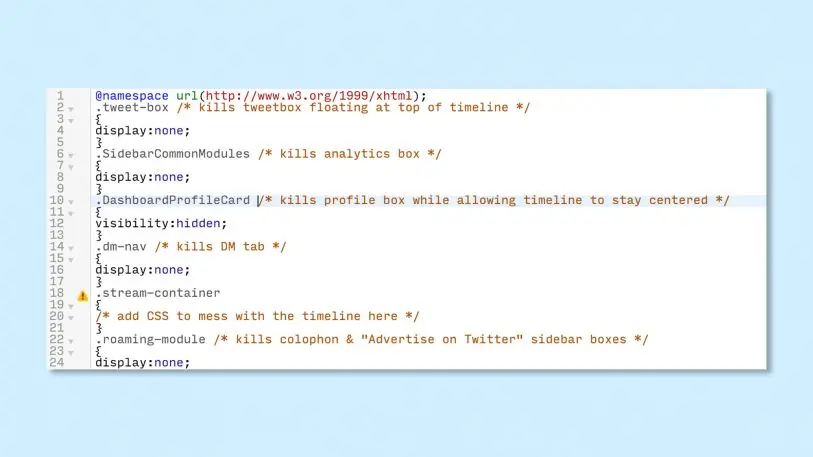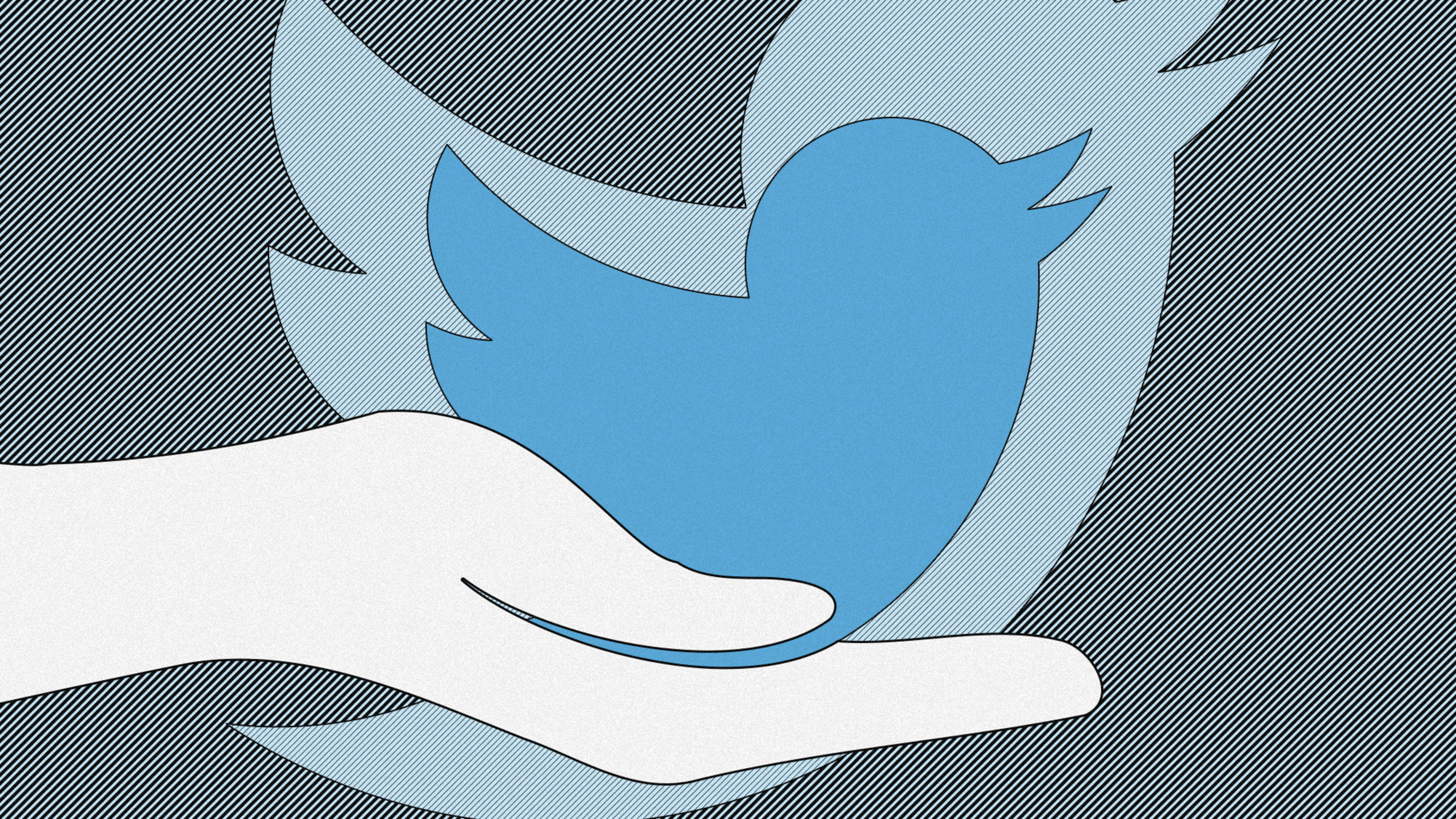As we did with nicotine, we may someday discover that there is no safe dose of Twitter. For now, you may be (or just feel) compelled to use the platform. But who says you have to inhale its tar-filled content-vapors unfiltered? What if, when you visited twitter.com (because if you haven’t already deleted the app from your phone, do that immediately), you saw something that was barely a social network at all–and something more like a harmless linkblog? Something like… this:

I put together a CSS theme that, when combined with this Chrome extension, makes my Twitter feed look just like that screenshot above, instead of the roaring garbage fire it actually is. You can install it in about two clicks by following these instructions, but that’s not the point.
The point is that I did this without being a designer or a coder. I’m just a regular person who realized that I didn’t have to be a designer or coder in order to exercise some personal agency over a social network. And you can, too.

Step two is a bit trickier: Decide what you don’t hate. After using a read-only version of Twitter, I quickly realized that I still wanted some social interactivity. At the very least, I wanted to post my own tweets. So, what I really wanted from Twitter was just two things: a naked, chronological feed, and a button to let me post. Everything else was noise.
I looked around for Chrome extensions or Twitter web apps that were already built to these specifications, but I didn’t find any. I did notice that a “write-only” version of Twitter came close, though: It uses custom CSS to chop out every part of Twitter except the tweet button. Even better, its code was editable.
Again: I can’t code. I’ve never written CSS. But Charles Eames says design is “a method of action,” so I looked at the CSS and discovered that it was less than a page long and surprisingly human-readable. There was a blob of code with “timeline” and “display:none” in it. If I wanted to put the timeline back in, but keep the rest of the Twitter experience brutally stripped down, maybe I could just delete that blob of code. I tried it. It worked.

That was the moment I felt empowered–like I could actually “design” Twitter to match my own needs, without asking anyone’s permission and regardless of my formal skill level. Actually, why put scare quotes around the word? If design is “a plan for arranging elements to accomplish a particular purpose” (Eames again), then I was the designer now.
My tools were nothing more than the CSS that someone else had already written (thank you, actual knowledgeable person!) and the cut-and-paste commands on my laptop keyboard. Pretty soon, I had carved Twitter down to exactly what I wanted and no more: a naked timeline and a tweet button. It was entirely nonaddictive and non-threatening. Almost…boring. Which was entirely the point.
This is the moral of the story: You can do likewise. In fact, I’ve written plain-English instructions into the CSS of my ultra-minimal version of Twitter that you can use–in the same cut-and-paste, no-coding-skills-necessary manner that I did–to restore any individual piece of the interface you want. Maybe you love Moments? I do not understand you, but de gustibus non est disputandum.
But even if you don’t care to do any of that, just know this: You don’t have to capitulate to social media’s hostile design choices. (I’m talking about the design choices that make apps act like slot machines engineered to addict you, not the awful behavior of some people on these platforms, which is whole different problem.) Let’s be real–Jack Dorsey isn’t reading any of the think pieces on how to “fix” Twitter. No one is going to fix it for you. Ever.
Except, maybe, you.
Recognize your brand’s excellence by applying to this year’s Brands That Matter Awards before the early-rate deadline, May 3.
